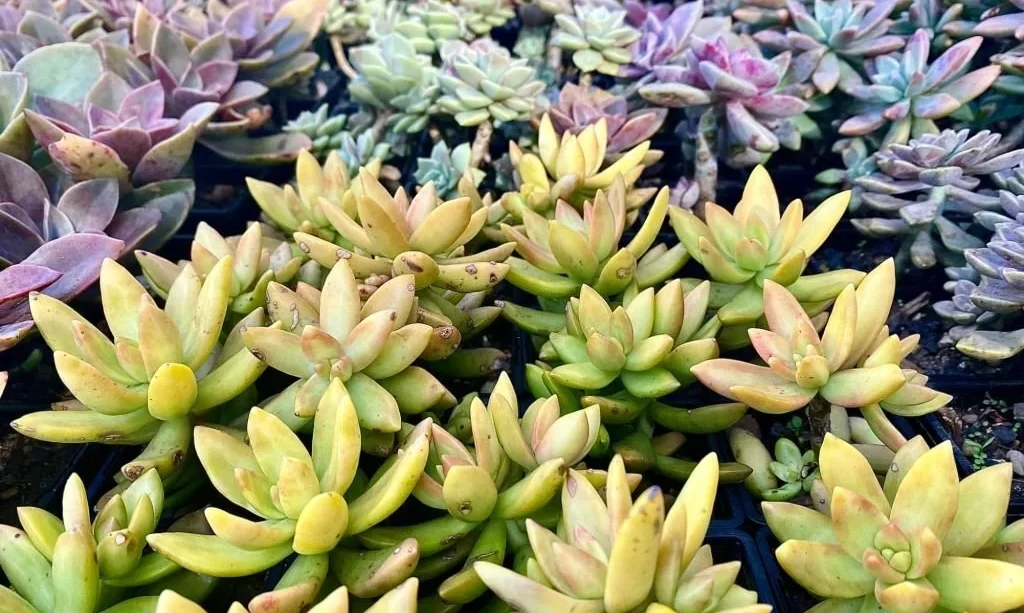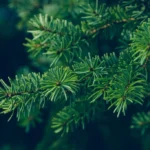Succulents, with their captivating and resilient nature, have become beloved plants for many. However, if you’ve noticed your succulent’s leaves turning yellow, it’s natural to wonder what might be causing this change. In this uncomplicated guide, we’ll walk you through the common reasons behind why succulents develop yellow leaves. By understanding these factors, you’ll be better equipped to provide the necessary care to restore your succulent’s vibrant health.
- Instantly feeds succulent plants, including cacti
- For all cacti, jade, aloe and other popular succulents
- Feeds instantly
- Able to apply directly to the soil or can mix with water
- Feed every 2 weeks
Natural Aging
The yellowing of succulent leaves is sometimes a natural part of their growth cycle:
- Leaf Senescence: As succulents mature, their older leaves, especially those situated closer to the base of the plant, may turn yellow and gradually drop off.
- Shedding Old Leaves: Just like trees shedding leaves in the fall, succulents shed their older leaves to make room for new growth. This process, known as senescence, allows the plant to redirect its energy towards producing fresh leaves and stems.
- Healthy Process: Yellowing and shedding of older leaves is a sign that your succulent is progressing through its life stages. As long as new growth appears healthy, you can rest assured that the plant is following its natural course.
It’s important to distinguish between natural aging and other potential causes of yellowing leaves in succulents. By understanding the role of senescence in the life of your plant, you can provide appropriate care and ensure its continued well-being. As we continue exploring the factors behind yellowing succulent leaves, you’ll gain valuable insights into keeping your succulent thriving.
Overwatering
Excessive watering is a common culprit behind succulent leaf yellowing:
- Root Health: Overwatering can lead to root rot, a condition where the roots become damaged due to prolonged exposure to moisture. This hinders the plant’s ability to absorb nutrients and water properly.
- Yellowing and Wilting: As roots struggle to function in waterlogged soil, succulent leaves may turn yellow and even appear wilted. This is a sign of stress caused by the lack of oxygen in the soil.
- Prevention: To prevent overwatering, ensure that the pot has proper drainage and that the soil dries out between waterings. Stick your finger into the soil; if it’s dry an inch below the surface, it’s time to water.
Underwatering
Inadequate watering can also lead to yellowing leaves in succulents:
- Dehydration Stress: Succulents are adapted to survive in arid conditions, but prolonged lack of water can stress the plant and cause its leaves to turn yellow and shrivel.
- Leaves as Reservoirs: Succulents store water in their leaves as a survival strategy. When they don’t receive enough water, they use up these reserves, resulting in visible signs of stress.
- Proper Hydration: Water your succulent thoroughly when the soil is dry to the touch. Ensure that water reaches the roots, allowing the plant to replenish its stored water.
Understanding the delicate balance of watering your succulent is crucial in preventing both overwatering and underwatering. By providing the right amount of moisture, you can ensure your succulent maintains its vibrant appearance. As we explore additional factors behind yellowing leaves, you’ll be equipped with the knowledge needed to diagnose and address any issues your succulent may be facing.
Poor Lighting
Insufficient or excessive light can contribute to succulent leaf yellowing:
- Lack of Light: If your succulent isn’t receiving enough light, it might stretch towards the light source and develop elongated, pale yellow leaves. This phenomenon, known as etiolation, is a response to the plant’s attempt to maximize light absorption.
- Sunburn: On the other hand, placing succulents in direct sunlight, especially during intense hours, can lead to sunburn. Sunburned leaves often appear discolored, turning yellow or even brown.
- Balancing Act: Find a balance between providing your succulent with adequate sunlight without subjecting it to harsh conditions. Morning sunlight or filtered light is usually preferable.
- Formulated to loosen clay and reduce caking
- Improves drainage and aeration
- Available in an 18qt size
Nutrient Deficiency
A lack of essential nutrients can manifest as yellowing leaves in succulents:
- Yellowing Tips: If the tips of your succulent’s leaves are turning yellow while the rest of the leaf remains green, it could indicate a deficiency in nutrients like nitrogen.
- Balanced Fertilization: Provide your succulent with a balanced, diluted fertilizer formulated for succulents. This will help ensure it receives the necessary nutrients without overwhelming it.
- Caution: While it’s important to address nutrient deficiencies, be cautious not to over-fertilize, as this can lead to other issues.
Conclusion
The yellowing of succulent leaves is a clear sign that your plant is trying to communicate its needs. By considering factors such as natural aging, watering habits, light exposure, and nutrient intake, you can pinpoint the cause of the issue and take appropriate action. Whether it’s adjusting your watering routine, providing the right amount of sunlight, or supplementing nutrients, addressing the underlying cause can lead to a revival of your succulent’s health and vibrancy.
Succulents, known for their resilience, are forgiving plants that can bounce back with the right care. As you continue your journey of tending to your succulents, the knowledge gained from understanding yellowing leaves will empower you to create a thriving environment for these unique and charming plants.





